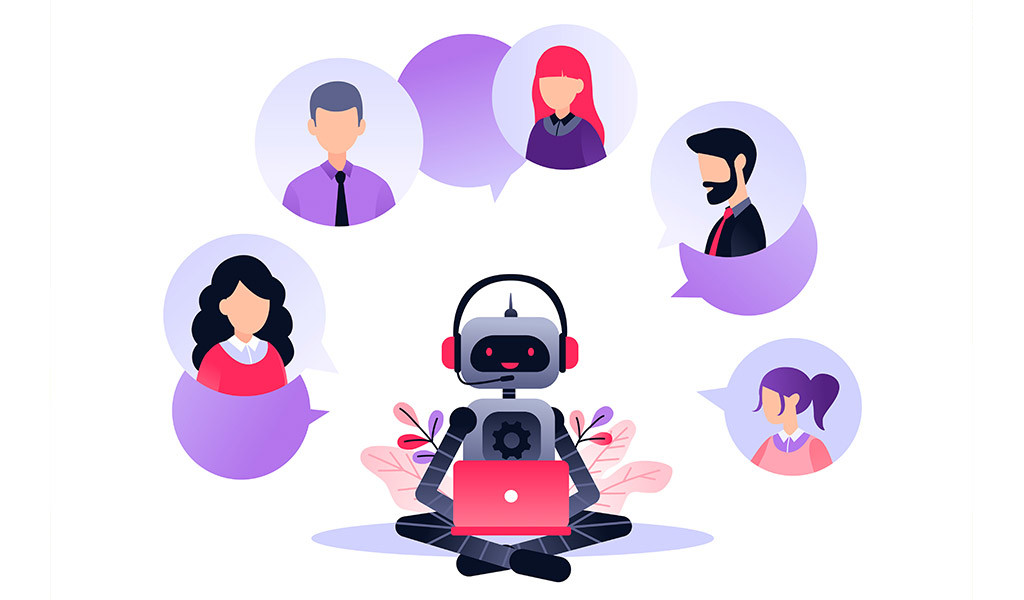
Customer service is the frontline of your company. They are the employees dealing with all the nuances of customer interaction in the modern age, whether that’s complaints, confusion, or praise. But how has this role changed over time?
Not so long-ago customer service jobs were seen as uncomplex and not prestigious. Agents would sit in a call center between 9 am and 5 pm, answering calls all day long. It was hard and often thankless work. There would be angry customer after angry customer calling up and agents would have to help solve their issues with a very limited amount of time and with limited technology.
However, over the last five or so years, this has changed. Customer service agents now have a wide range of skills, abilities, and responsibilities that make them much better equipped to help customers in the modern world. It’s no longer about firefighting complaints as you’re bombarded with them. There’s a much more intelligent approach to customer service today that benefits businesses, customers, and agents alike.
There’s no doubt that this shift has been accelerated by, and perhaps even stemmed from, the rise in advanced technologies. Automation and AI have had the biggest impact in this area.
Customer service roles today are higher paid and are considered more prestigious than they were even five years ago, and this is a trend we expect to see continue as we advanced through the 2020s. Let’s take a look at the current state of the customer service role today.
Past, Present, and Future
To understand how customer service roles have become more lucrative and therefore more highly sought after, we first have to understand how customer service has evolved and how we expect the role to continue to evolve into the future.
Technology Making The Experience Worse
While recent advances in automation, AI, machine learning, and other technologies have shaped the customer service landscape for the better, this hasn’t always been the case. Clunky and inefficient technology can actually make the customer experience worse and therefore negatively affect your business’ reputation.
Outdated technology and their accompanying processes can cause a lot of frustration for customers. Let’s consider a situation most of our readers have probably been in at some point. You call up a company and are met with the IVR system. The questions seem too restrictive for you. You’re listening to the questions thinking “that doesn’t fit what I need”, but you have to listen to them all anyway in the hopes that you’ll be queued after the spiel is over or you’ll just decide to pick the option closest to your situation. Already you’re feeling a little frustrated – Why can’t I find the option I need, and why does it take so long to reach an agent?
When you do finally reach an agent you may be asked to verify your identity. This normally takes a couple of minutes, and then you can talk to the agent! Yay! Well, maybe. What happens if the agent can’t help with your problem and needs to transfer you to another team? You get transferred and then the agent says “before we get started, I just need to verify your identity”. This is a simple example of how outdated technology and practices can hinder the customer experience. In fact, 31% of UK customers, and 21% of US customers said not having to repeat themselves is the most important aspect of a good customer service experience.
Integration is a huge part of why technology works so much better in our call centers today. A customer should be routed to the most appropriate agent straight away, and they shouldn’t have to repeat the same information, but rather the information should travel with them through the customer service process.
Restrictive Opening Hours

Call centers were traditionally open from 9 am to 5 pm, five days a week. This is too restrictive to meet the needs of the population at large. Although the working times of the modern population have shifted considerably in the last decade, most Americans will still arrive at the office between 7 am and 9 am and work until 4 pm to 6 pm. In the past, and for the call centers who still use these opening hours, this means that customers are forced to manage their complaint resolution around their work schedule. This adds a layer of stress to customers who are already unhappy.
Modern call centers are moving away from these restrictive opening times. Instead, they are hiring agents to work different hours that match the lives of their customers. We now also have more advanced automated messaging systems that can bridge the gap when no agents are available.
Systems, Systems, and More Systems
The call centers of the past were plagued with several siloed pieces of software that agents would have to switch between. This is extremely inefficient and leads to time delays for the customer. This trend happened for multiple reasons. As new technology came onto the market, companies felt they should buy new software that could handle one particular part of the customer service experience. A good example of this is companies moving towards supporting multiple communication channels. According to HayWire, 89% of customers say they’d like to have more than one option for customer support. This makes sense, of course, but the solution to this desire is often clunky. Companies of the past opted for separate teams using completely separate software suites to handle customer interactions through social media, messaging, calls, and other communication channels.
This results in several problems. Customer data frequently gets lost or has to be input to multiple systems. Having repeat data across multiple systems is time-consuming for the agents who have to copy this data, and it can also lead to inconsistencies between the programs.
Modern call centers are moving towards an omnichannel approach to customer service. All agents use one piece of software and all data is contained within the system. Besides just being simpler all round, it also means less agent training, less duplicated efforts, and a more complete view of the customer.
The Customer Is Now In Control of Where Interaction Happens
In the past, customers were forced down one or maybe two communication routes with the company. Your options were usually to call the company, or to email them and probably wait countless days to receive a reply.
We now live in a world where consumers use multiple communication services in their daily lives whether that’s WhatsApp, Facebook Messenger, Weibo, Twitter, Instagram, the list goes on. Companies are now starting to adapt to this shift in communication options. Customers want to be able to contact the company in the way that best suits them. They also don’t want to fill their phone up with hundreds of apps just to chat with each company their buy from. In the future, consumers will expect to talk to companies without having to leave their preferred messaging app, and companies will have to accommodate this by integrating this functionality into their customer service software.

Evolution of Automation and AI
Automation and AI technologies within call centers have risen dramatically over recent years and this trend is expected to continue. In fact, the call center AI market is estimated to be USD 2,800 Million by 2024, up from 800 million in 2019.
The introduction of these technologies has undoubtedly changed the way call centers worked, the working environment for agents, and the responsibility for agents. Let’s take a look at a few simple ways automation and AI is helping agents do their job.
Predicting Customer Intent
We now have AI software that can use the information given by the customer to determine what they want and who would be best to address the issue. This goes hand in hand with the high levels of data collection and analysis we are now capable of. This immense amount of data powers AI systems in call centers to:
- Route customers to the right agents.
- Suggest sup-selling to the agent based on previous buying patterns and advanced profiling.
- Flagging concerns to agents. For example: fraud, missing information, important updates or news the customer may not be aware of.
Improved Self Service
It used to be the case that companies just had a simple FAQ section on their website. Today, self-service is much more expansive. Customers can now talk to intelligent chatbots that communicate like a human being, understand the customers’ wants and delivering solutions quickly.
Chatbots are a great way to reduce the volume of calls or live messages going to agents for questions that have a simple and straightforward answer. Therefore, chatbots free up agents’ time to spend more time with customers who have more complex issues and require more time and attention.
What This Evolution Means For Agents
It’s clear to see that the very nature of an agent’s role has changed over recent years. Companies are now much more focused on customer experience and the evolution we have seen in customer service call centers reflects this.
The Shift In Desired Agent Skills
As the workplace environment evolves, so do the skills that are needed in the workplace. AI is transforming our workplaces and that includes call centers where AI is shaping the way agents work in major ways.
Soft skills and empathy are expected to become a much more important trait in customer service agents. If you’re wondering what exactly ‘soft skills’ are, the term is defined as “personal attributes that enable someone to interact effectively and harmoniously with other people.” It’s clear to see why these skills would be extremely advantageous in a customer service environment. These skills are also much harder to replicate with automation and AI than hard skills.
At present, jobs requiring hard skills, for example, programming in Python, pay twice as much as jobs with soft skills like communication and teamwork. However, it’s expected that over half of the job activities we see today won’t exist in 2055, and hard skills are particularly vulnerable to this. As time progresses, there will be much more demand for soft skills within the workplace and people will be paid increasing amounts for possessing these skills.
In terms of customer service, agents with strong soft skills are better equipped at problem-solving and this directly translates to profits for the company. Good customer service isn’t just about providing a quick solution to a customer’s problem and then continuing with your day. It’s about making the customer feel listened to, valued, and happy about their experience. It’s about turning a bad experience into a good one, an unhappy customer into a happy customer.
According to the American Express 2017 Customer Service Barometer, Millennials are willing to spend an additional 21% for great customer service (this was the most of any group).
More Pay
Artificial intelligence is helping agents become super agents. In forwarding thinking companies of the present and in companies of the future, agents will have to possess a particular set of advanced skills.
- They will need to manage the customer through several different communication mediums, for example, WhatsApp, Instagram, Twitter, and others.
- They will have to respond to prompts and suggests from AI and determine whether the suggestion makes
- They will have more time to be more flexible within their role. This means coming up with creative ways to improve the business, take part in more training, and offer unique solutions.
- More control will be placed with the agents. In the past agents were restricted to following a script and there wasn’t much room for deviation from this script. As the need for soft skills advances, more trust will be placed with agents and we will also be able to effectively monitor which agents have the most successful communication approaches and adapt training accordingly.
Increased Job Satisfaction
Agents who have more control, are better equipped to do their jobs and perform their jobs at a higher level, experience more job satisfaction. Job satisfaction has a direct effect on turnover rates, something which call centers have historically had problems with. Call Centers traditionally had extremely high staff turnover rates for a multitude of reasons. For example:
- Lack of career progression. Many agents felt that they were replaceable and that there was no way for them to set themselves apart from the crowd due to how restrictive the role was.
- Lack of satisfaction. A call center that uses old technology and creates a negative customer experience isn’t a fun place to work. Unhappy customers may be rude and angry towards employees and this has a huge effect on morale.
- Boredom. Customer service jobs in the past have often been repetitive, leaving little room for employees to try new ways of addressing customers or allowing them to switch between communications streams.

Conclusion
The role of the customer service agent is fast becoming a sought-after role that will play a key role in our societies for years to come. We’re rapidly advancing into the digital age where AI and automation are becoming commonplace, and this is only expected to continue. However, the goal of AI and automation isn’t to replace the role of customer service agents, but rather to help them to become super agents.
Agents in the past spent an absurd amount of time just trying to keep their heads above water. The phone lines would open at 9 am and the calls would be flooding in immediately. Agents would take one call after another, dealing with angry customers who they were ill-equipped to help. They may even be the second, third, fourth agent the customer has been passed to! By the time the customer finally gets to the right agent they are frustrated and even angrier. The customer may also be angry because they wanted to talk to the company over live chat, WhatsApp, or another medium. Or maybe they just had a simple question but can’t find a straightforward answer on the company website and the company doesn’t have a chatbot. These are all examples of how the technological landscape of call centers of the past have hindered the agents’ ability to do their job effectively.
Technology is now at a point where it can support agents in their role rather than hinder them. Dealing with this new technology and the shift in the call center environment requires a new set of skills that will demand higher pay and prestige. Agents will have more responsibility, more adaptability, more technical skills, and much stronger soft skills. Agents will feel much more satisfied in their roles and therefore stay loyal to their organizations for much longer periods of time. This leads to stronger organizations with a well-educated workforce. Not only does the company save money on not having to recruit and train new agents all the time, but the agents they retain have a wealth of knowledge about the brand and customers that can’t be undervalued.